Coffee Table Part 3 – Table Top And Bending Form
I will do the rest of the gluing in two separate operations. I use lots of wedge shaped pieces to help make the glue line perpendicular to the clamps. this helps reduce the slipping of the joint.
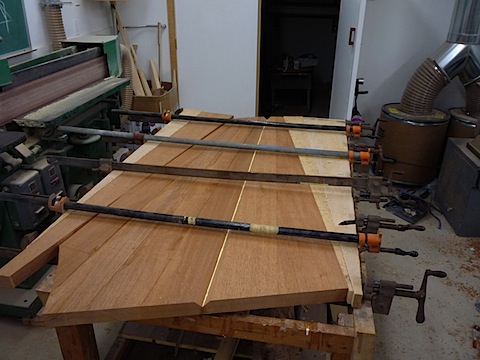
The glue is water soluble so i go in with a brush and water to clean up the joint. There will be a lot of sanding needed to clean up the watery residue but it is easier than dealing with dried glue.
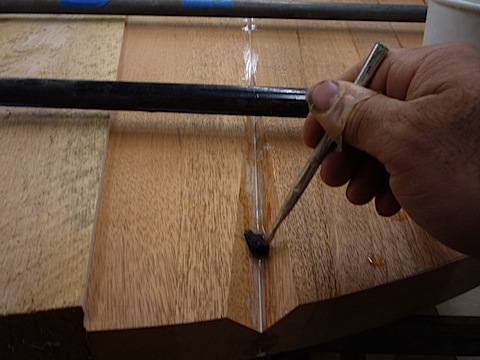
Last glue up for the table top.

I unclamp the table and set it out of the way. It is upside down so that i can scrape the glue off the bottom.

I am shifting gears now to the rest of the under structure. The blue tape represents where the legs will go. The cardboard curve will serve as a template to help make the form that the stretcher will be bent over.
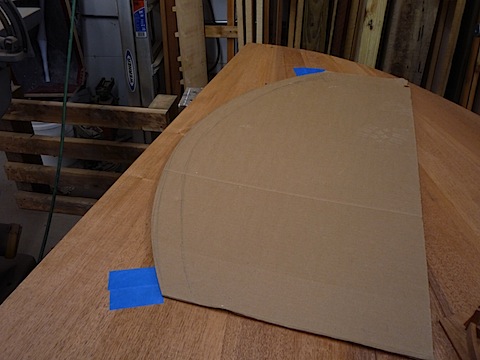
I transfer the curve to a piece of particle board. I then use the edge sander to fair out the curve. This one piece will serve as a template for the other layers that will make up the bending form. It occurs to me that this might not be all that clear since most people are not familiar with the process of making a bent lamination. I will explain in greater detal in the next post. The quick version is a board is cut into thin strips and glued together over a form. The glue dries and the board is one piece and bent! The steps below detail building the form.
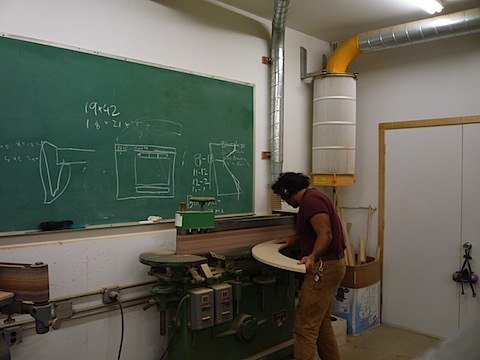
I transfer the shape to the rest of the sheet.
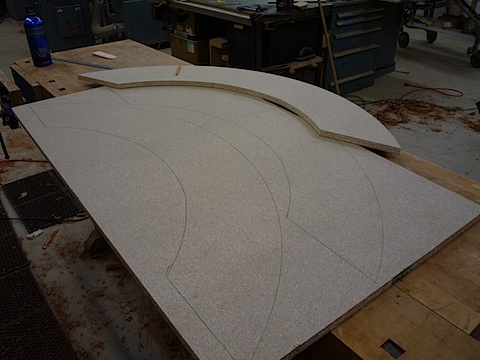
Here are all of the layers before the assembly.
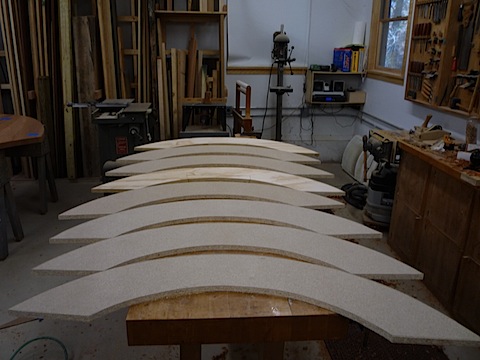
The process to put the form together will involve staples, glue and the router to follow that first piece that i refined on the edge sander.
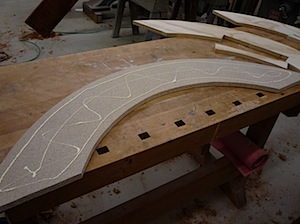
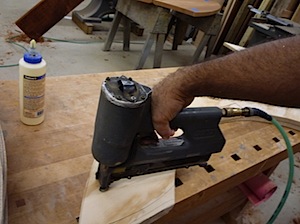
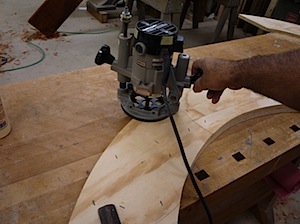
The finished form.
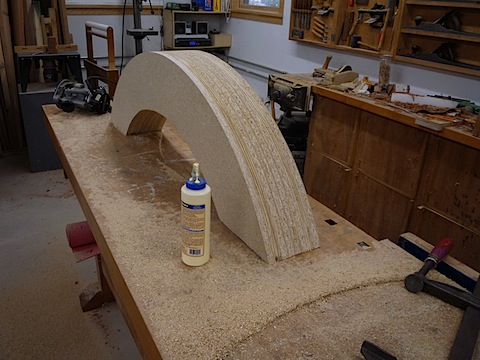
I need to build a foot to stabilize the form and cover it in brown packing tape so the glue will not stick.
Coffee Table Commission
Part 1
Part 2
Part 3
Part 4
Part 5
Part 6
Part 7
Part 8
Part 9
Part 10
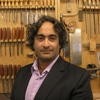 By Nico Yektai -
By Nico Yektai -New York based designer/maker Nico Yektai opened the doors to his Hamptons studio in 1995 after completing the MFA program at the School For American Craft at the Rochester Institute of Technology. The rigorous technical training complimented his background in Art History, which he studied, at Hobart College in Geneva NY. Yektai has synthesized this background into a singular style that has gained him national attention. Visit nicoyektai.com for more information